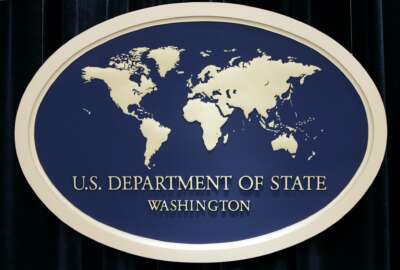

The State Department’s Bureau of Information Resource Management, under the COVID-19 pandemic, accelerated the way it fields applications that support the...
The State Department’s Bureau of Information Resource Management, under the COVID-19 pandemic, accelerated the way it fields applications that support the agency’s mission.
The agency embraced an agile methodology for app development out of necessity in the early months of the pandemic, when the agency brought more than 100,000 overseas Americans back into the United States. In the aftermath of that effort, the State Department’s top IT officials say agile is here to stay.
State Department Chief Information Officer Stuart McGuigan said Friday that a new “reimagine taskforce” just wrapped up a 90-day sprint looking at ways the agency can take lessons learned during the pandemic and apply them to everyday IT challenges.
“We can’t lose our agile and iterative approach to learning and continuous improvement,” McGuigan said Friday during an ACT-IAC event. “What things do we find remain barriers to effective flexible workforces that, with a little focus, we can remove and prioritize those more than maybe they’ve been prioritized in the past.”
Principal Deputy CIO Michael Mestrovich said the agency in the early stages of the pandemic immediately deployed 10 applications directly related to the agency’s COVID-19 response. Those apps, for example, played a key supporting role in the agency’s three-to-four-month effort to repatriate Americans overseas.
“We would have never been able to do that if we didn’t have this agile approach to application development,” Mestrovich said.
The applications allowed the agency to find out where citizens were, understand what their needs were, communicate with them, charter flights, get repatriated Americans to sign the paperwork needed to board these flights and conduct the necessary medical clearances.
By July, Mestrovich said IRM had delivered 350 iterative releases of these applications, with each update coming daily or weekly based on feedback and requests for new features from users.
The State Department faced unique challenges preparing for mandatory telework. The agency’s workforce wasn’t accustomed to telework, and the agency operates nearly 280 posts in 190 countries.
However, McGuigan said the agency under his leadership has made the necessary investments in cloud prior to the pandemic that gave employees remote access to email and strengthened the agency’s identity management. Because of this infrastructure, the agency was able to onboard 430 new employees virtually during the pandemic without these employees ever setting foot in the office.
As for next steps, the State Department is building out a data lake to improve its data analytics capabilities. Mestrovich said the data lake would help the agency determine whether employees in a given area have the tools they need to work effectively, or need additional support or bandwidth in order to meet their mission.
In addition, the State Department has stood up an IT executive council across 50 bureaus that’s reviewing the collective requirements of the agency where the department can move ahead on enterprise solutions.
“The goal is where there’s commonality of need, we’ll do things faster, better, more cost effectively if we do them collectively. If there truly is mission differentiating requirements – and there are, in some cases – then we need to be able to support bureaus with this specific technology they need,” McGuigan said.
Copyright © 2025 Federal News Network. All rights reserved. This website is not intended for users located within the European Economic Area.
Jory Heckman is a reporter at Federal News Network covering U.S. Postal Service, IRS, big data and technology issues.
Follow @jheckmanWFED

